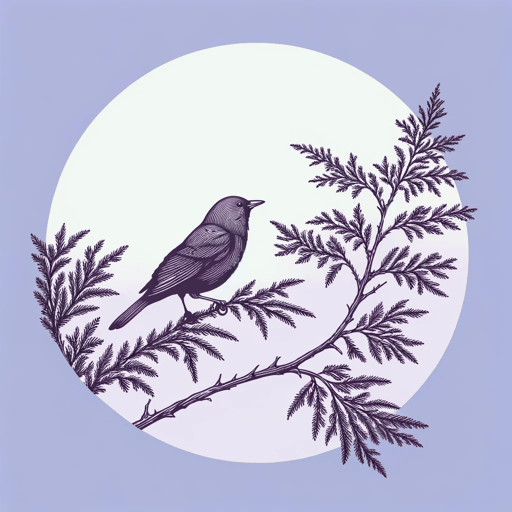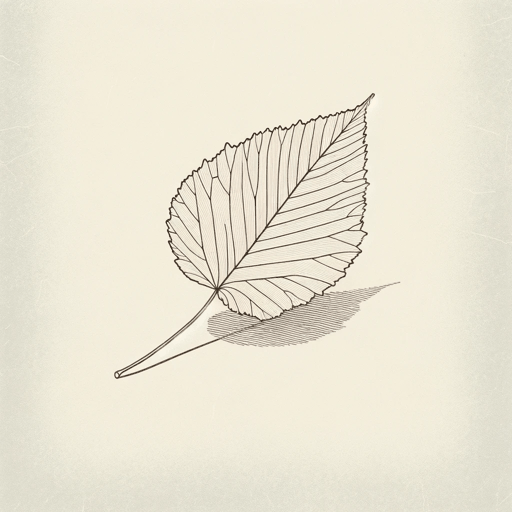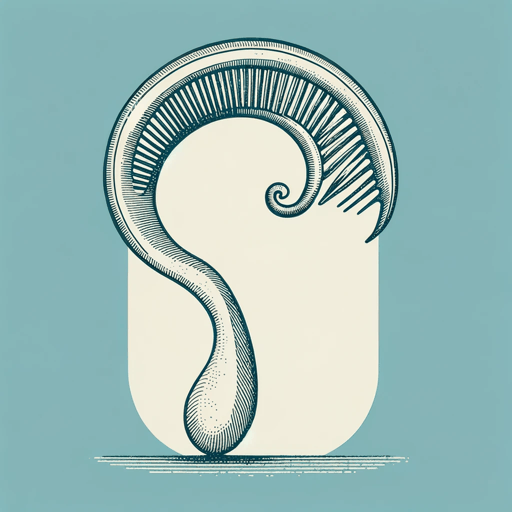22 pages • 44 minutes read
Wallace StevensThirteen Ways of Looking at a Blackbird
Fiction | Poem | Adult | Published in 1917A modern alternative to SparkNotes and CliffsNotes, SuperSummary offers high-quality Study Guides with detailed chapter summaries and analysis of major themes, characters, and more.
Summary and Study Guide
Overview
Wallace Stevens is the author of “Thirteen Ways of Looking at a Blackbird,” and he first published the poem in 1917 as a part of the literary anthology Others: An Anthology of New Verse. In 1923, he included the poem in his first collection of poetry, Harmonium, which features many of Stevens’s most well-known poems—poems that continue to appear in anthologies—like “The Snow Man“ and “The Emperor of Ice-Cream.” Stevens was born in Pennsylvania and lived most of his life as an insurance executive in Connecticut. Despite his ostensibly stable life, his poetry links to Modernism and its emphasis on fragmentation and jarring images. Like other Modernists and a notable number of 20th-century Western poets, Stevens’s poetry can come across as obscure and difficult to interpret. What Stevens is trying to say isn’t always easy to grasp. Yet that’s the point—the modern world is an intricate place, and, in a Modernist perspective, poems should reflect its complexity. In “Thirteen Ways,” Stevens highlights the tangled nature of modernity with themes like How to See, The Fluidity of Reality, and The Mystery of the World.
Poet Biography
Wallace Stevens was born in Reading, Pennsylvania, in 1879. His father was a prosperous lawyer, and his mother was a teacher. Before bed, his mother read him and his four siblings parts from the Bible. In 1897, Stevens went to Harvard University and New York University. After college, he worked as a journalist and a lawyer. In 1909, he married Esie Kachel (also from Reading), and to accommodate her dislike of New York City, they moved to Connecticut in 1916, where he worked at the Hartford Accident and Indemnity Company. In 1924, his daughter, Holly, was born. Kachel exhibited symptoms of mental health conditions, eventually resulting in the couple moving into separate living spaces in their home. Despite Stevens’s own poor, deteriorating health, he continued to work at the insurance company. Before he died in 1955 at the age of 75, he received a Catholic baptism.
In 1923, at age 44, Stevens published his first collection of poetry, Harmonium, which features “Thirteen Ways” and many other poems that Stevens is well known for. Thirteen years later, he published his second book, Ideas of Order, which also contains knotty, elusive poems. He published several more poetry collections throughout his life, as well as a book of essays titled The Necessary Angel (1951). About Stevens’s poetry, the 20th-century literary critic Edmund Wilson quipped, “Even when you do not know what he is saying, you know that he is saying it well” (quoted in Wallace Stevens in Context, ed. Glen MacLeod, Cambridge, 2016, unpaginated e-book). Despite the imputed difficulty of Stevens’s oeuvre, he won many awards throughout his career, including the 1955 Pulitzer Prize for Poetry for The Collected Poems of Wallace Stevens a year before his death.
Poem text
I
II
I was of three minds,
Like a tree
In which there are three blackbirds.
III
The blackbird whirled in the autumn winds.
It was a small part of the pantomime.
IV
A man and a woman
Are one.
A man and a woman and a blackbird
Are one.
V
I do not know which to prefer,
The beauty of inflections
Or the beauty of innuendoes,
The blackbird whistling
Or just after.
VI
Icicles filled the long window
With barbaric glass.
The shadow of the blackbird
Crossed it, to and fro.
The mood
Traced in the shadow
An indecipherable cause.
VII
O thin men of Haddam,
Why do you imagine golden birds?
Do you not see how the blackbird
Walks around the feet
Of the women about you?
VIII
I know noble accents
And lucid, inescapable rhythms;
But I know, too,
That the blackbird is involved
In what I know.
IX
When the blackbird flew out of sight,
It marked the edge
Of one of many circles.
X
At the sight of blackbirds
Flying in a green light,
Even the bawds of euphony
Would cry out sharply.
XI
He rode over Connecticut
In a glass coach.
Once, a fear pierced him,
In that he mistook
The shadow of his equipage
For blackbirds.
XII
The river is moving.
The blackbird must be flying.
XIII
It was evening all afternoon.
It was snowing
And it was going to snow.
The blackbird sat
In the cedar-limbs.
Stevens, Wallace. “Thirteen Ways of Looking at a Blackbird.” 1917. Poetry Foundation.
Summary
As the title states, the poem is about 13 ways of looking at a blackbird. Thus, there are 13 sections (stanzas), and each section highlights how a person can see the blackbird in question.
The first way of looking at a blackbird is when it’s on “twenty snowy mountains” (Line 1), and nothing moves but the blackbird’s eye.
The second way of seeing a blackbird is with the mind. The speaker in this section has “three minds” (4), and they compare themselves to a tree that has three blackbirds on it.
For the third way, a blackbird flies in the “autumn winds” (Line 7), and it has a role in a piece of theatrical amusement, or “pantomime” (Line 8).
In the fourth way, there’s a woman and a man—they’re “one” (Line 10). A woman, a man, and a blackbird are also “one” (Line 12).
Before the speaker sees the blackbird in a fifth way, they wonder which they like more, the beauty of “inflections” (Line 14) or “innuendoes” (Line 15). They then ponder if they prefer the blackbird while it whistles or “just after” (Line 17) it whistles.
For the sixth perspective, the blackbird’s shadow goes back and forth across an icicle-covered window. The shadow creates a mood, and it comes with a mysterious “cause” (Line 24).
In the seventh way of looking, the speaker addresses the “thin men of Haddam” (Line 25), a Connecticut town, and the speaker asks the men why they dream of “golden birds” (Line 26) when a blackbird walks around the feet of the women in front of them.
The eighth way of looking at a blackbird arrives via knowledge. The speaker knows “noble accents” (Line 30) and clear, unforgettable rhythms. They also know that the blackbird participates in their knowledge.
In the ninth way, the speaker watches the blackbird fly “out of sight” (Line 35) as it leaves its mark on the edge of one of several circles.
In a 10th way, “the bawds of euphony” (Line 40) see blackbirds fly among a “green light” (Line 39), and “the bawds” emit a keen sob.
For the 11th way, a man in a glass coach traveling through Connecticut doesn’t see blackbirds, but he mistakes the shadow of his horse carriage for blackbirds.
In the 12th way, the speaker sees the river move and presumes the blackbird is also moving or flying.
For the 13th and final way of looking at a blackbird, the speaker notes the time of day—it’s been “evening all afternoon” (Line 50). They also mark the weather—it “was snowing” and it “was going to snow” (Lines 51-52). In the snowy afternoon/evening, the blackbird sits in the branches of a cedar tree.
Related Titles
By Wallace Stevens





